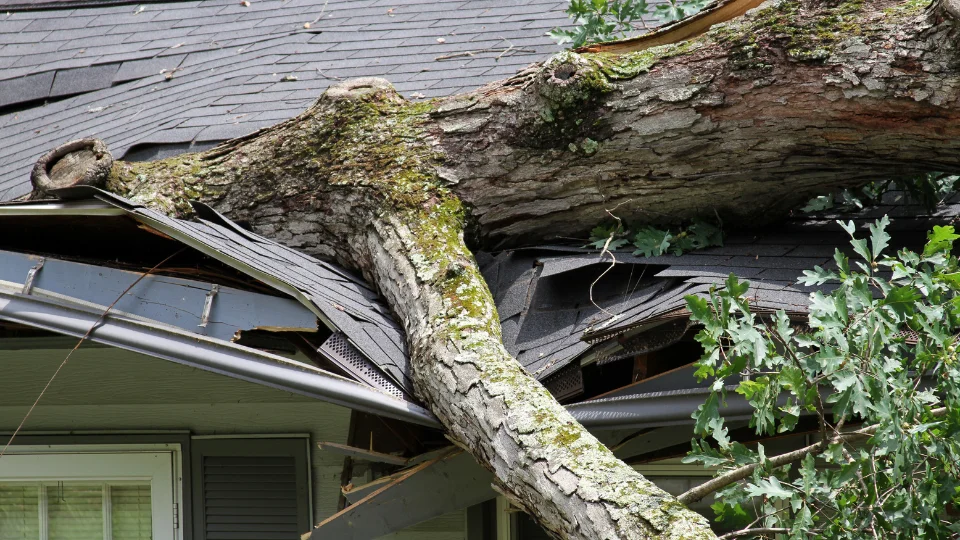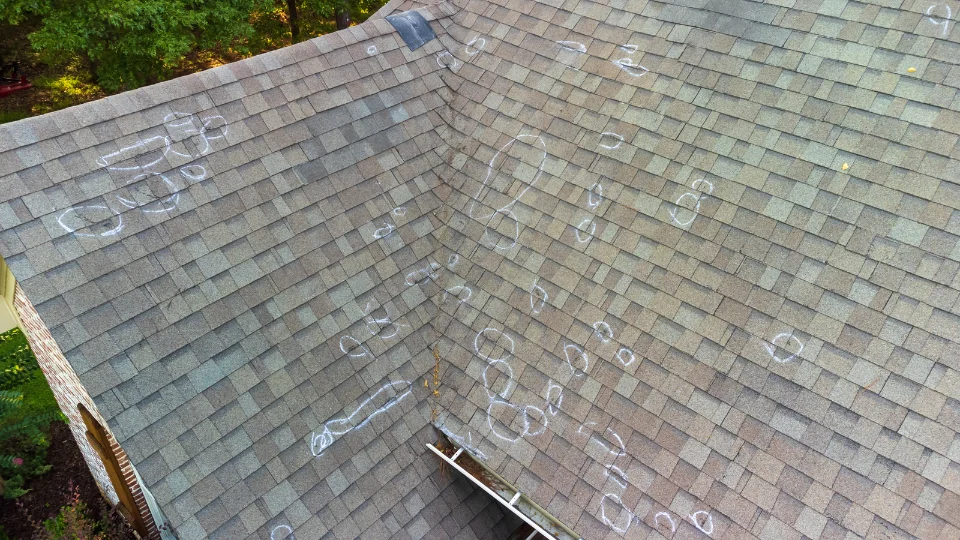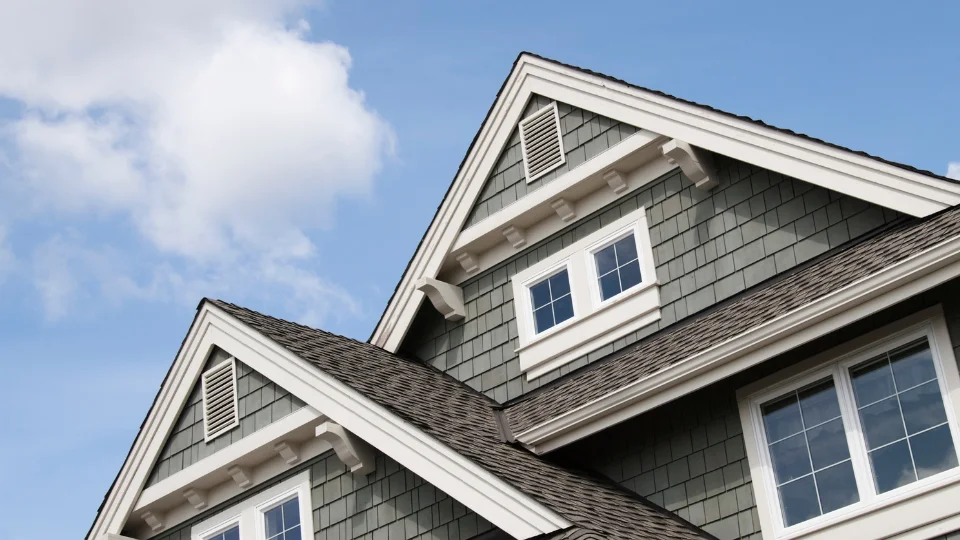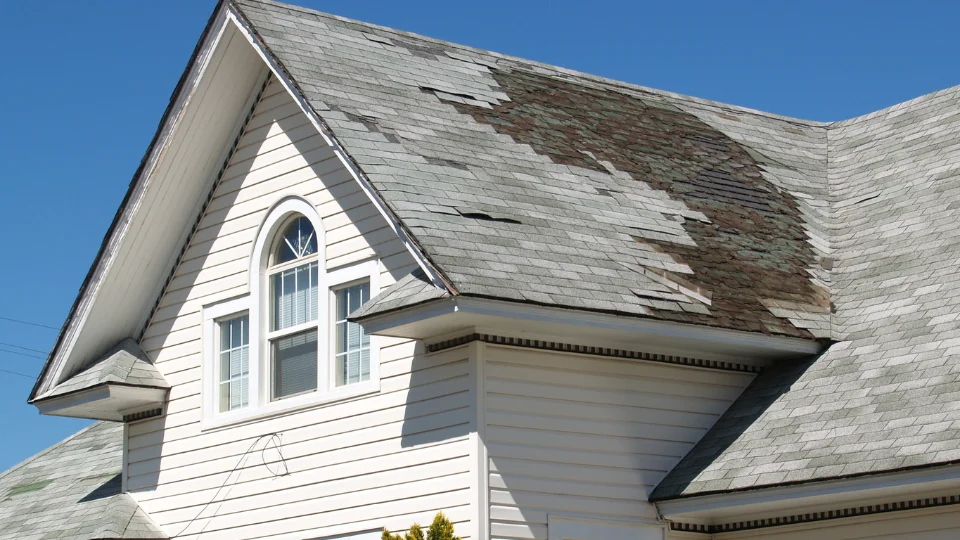When a strong storm hits, your first thought probably isn’t your roof — it’s whether everyone’s safe. But once the wind dies down and the skies clear, that’s when the real problems can start. Missing shingles, fallen tree limbs, or even small punctures can turn into big headaches fast. And if you’re like most homeowners, you’re probably asking: Will my insurance cover this?
The good news is: yes, most homeowner’s insurance policies do cover storm damage. The tricky part? Navigating the roofing insurance claims process for storm damage without getting overwhelmed or shortchanged.
Let’s break down exactly what to expect, what to avoid, and how to make sure your home — and your wallet — are protected.
Why Storm Damage Isn’t Always Obvious
Not all roof damage is dramatic. You might not see a gaping hole or missing chunks of shingles from the ground. Sometimes, wind can lift and reseal shingles without fully tearing them off, or hail can bruise shingle layers in ways that won’t show a leak for months.
If you ignore this kind of damage, it doesn’t just sit there. It gets worse — leading to leaks, mold, interior water damage, and costly repairs that aren’t covered because you waited too long to file a claim.
That’s why your best move after any major storm is to get a professional inspection, even if your roof looks fine. A trained eye can catch early signs that you wouldn’t notice until the next downpour.
What to Do After the Storm
The first 24–48 hours after a storm are the most important. Here’s what you need to do to get ahead of the insurance claim process:
Walk around your home safely (don’t climb anything) and check for signs like missing shingles, dented gutters, debris on the roof, or leaks inside the home.
Take photos and notes. Even if it seems minor, document everything.
Save news alerts or radar snapshots showing the storm’s path and intensity. This kind of third-party evidence can help support your claim.
Call a local, trusted roofer like Landmark Roofing to schedule an inspection. We’ll give you a full breakdown of damage and help you decide whether it makes sense to file a claim.
This early step matters more than people think. Insurance adjusters are busy after storms, and if your damage isn’t clearly documented, you could end up with a denied claim or a payout that doesn’t even cover half the repairs.
How Roofing Insurance Claims for Storm Damage Work
Filing roofing insurance claims for storm damage can seem complicated — but it doesn’t have to be. Here’s a simplified breakdown:
File the claim: Contact your insurance company and report the damage. You can do this online or by phone. You’ll get a claim number and an appointment for an adjuster to inspect the property.
Get a roofing inspection: Don’t wait for the adjuster to tell you what’s wrong. A contractor who knows what to look for can help make sure nothing is missed — and advocate for repairs the insurance company might overlook.
Meet the adjuster: Your roofer should be there during the inspection. We speak the same language as the adjusters and can walk them through all the damage, with clear photos and notes.
Get the estimate: Your insurance will send a breakdown of what they’ll cover and how much they’re offering. Review this with your contractor to make sure it covers everything.
Approve the work: Once the claim is approved, your roofer will get started. At Landmark Roofing, we use high-quality materials and certified crews so your repair isn’t just fast — it’s built to last.
Supplement if needed: Sometimes the insurance company’s first estimate doesn’t include everything. If additional damage is uncovered during repairs, we’ll help submit a supplemental claim to make sure it’s all covered.
Key Terms You Need to Understand
Deductible: The amount you pay before your insurance kicks in. Make sure you know your storm or wind/hail deductible — it’s often different than the one for other types of damage.
Replacement Cost Value (RCV): The full amount needed to replace the damaged roof.
Actual Cash Value (ACV): The depreciated value of your roof. If your policy is ACV-only, your payout could be much lower than you expect.
Supplement: Additional claim filed if more damage is found mid-project. Totally normal, but needs to be documented well.
Not sure which kind of policy you have? We can help you figure it out before you make any decisions.
Avoid These Common Mistakes
Waiting too long to file: Most policies have a deadline for storm claims — sometimes just 12 months. The sooner you act, the better.
Going with the cheapest bid: Low-cost contractors often cut corners, and insurance won’t cover the cost of redoing their work.
Letting the insurance company handle everything alone: Their adjusters work for them. You need someone on your side.
Falling for storm chasers: Out-of-town companies knock on doors after storms, offer quick fixes, and then disappear. Stick with local, vetted roofers with a proven track record.
Why Work With Landmark Roofing?
We’re not just roofers — we’re Maryland homeowners too. We know the stress storms can cause, and we’ve helped hundreds of people navigate insurance claims, from first call to final nail.
Here’s what you get with us:
Full inspection and storm damage assessment
Help filing your insurance claim
On-site meeting with your adjuster
Honest, detailed estimates
Premium materials and professional installation
A crew that treats your home like it’s their own
We’re also GAF Master Elite certified — a distinction only 3% of roofers nationwide earn — which means we offer better warranties and proven expertise.
Contact Landmark Roofing Today
Storms are stressful enough. Filing a roofing insurance claim shouldn’t add to it. Whether you’ve got missing shingles or just a hunch something isn’t right, it pays to get a professional’s eyes on your roof and take action before small problems become expensive disasters.
If you’ve been through a storm recently and you’re unsure what to do next, give Landmark Roofing a call. We’ll walk you through every step of the process and help you get the coverage and repairs you deserve — no shortcuts, no surprises.






